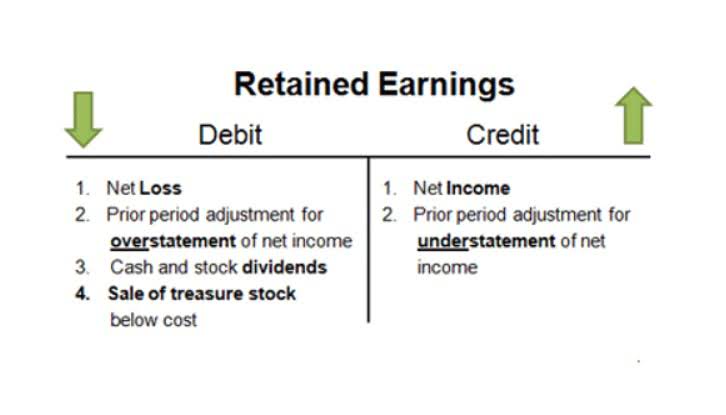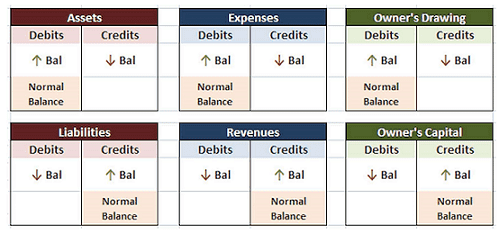
This type of asset requires meticulous record-keeping and transparent reporting to demonstrate adherence to the donor’s long-term vision. The management and reporting of unrestricted net assets carry significant implications for various stakeholders within a nonprofit organization. For donors, the transparent handling of these funds can build trust and encourage continued or increased contributions.
How to calculate unrestricted net assets
The statement of cash flows tracks the movement of cash in and out of the organization, segmented into operating, investing, and financing activities. This statement is essential for assessing the nonprofit’s ability to generate cash to meet its obligations and sustain its operations. It also helps in identifying trends in cash flow, which can inform future financial planning and decision-making. Unrestricted net assets play a crucial role in the financial landscape of organizations, particularly in the nonprofit sector.
- Unrestricted net assets are donations to nonprofit organizations that have no strings attached.
- Harnessing the power of unrestricted net assets can be a game-changer when it comes to achieving financial freedom.
- These disclosures provide insight into how the organization plans to sustain its operations and fulfill its mission over the long term.
- Whatever their source, they contribute to the overall financial health of the organization as part of its unrestricted net assets.
- Loyalty programs have become a cornerstone of customer relationship strategies for businesses…
- Unrestricted net assets are a crucial component of financial freedom for any organization, whether it be a nonprofit, a business, or even an individual.
Comprehensive Guide to Loan Accounting Principles and Practices

Learn effective strategies for managing and reporting unrestricted net assets in nonprofits to enhance financial transparency and stakeholder trust. Learn effective strategies for managing restricted net assets in nonprofit accounting to ensure compliance and accurate financial reporting. Unrestricted net assets are donations to nonprofit organizations that have no Bookkeeping for Chiropractors strings attached. That is, the assets may be used by the organization for general expenses or any legitimate expenditure. It’s possible for fixed assets to have donor restrictions, for example a building that can only be used for a specific purpose, but in this example fixed assets are not restricted. Even if fixed assets are unrestricted, though, they are still not cash nor are they usually easily converted to cash (liquid).
Strategies to Increase Unrestricted Net Assets

For example, let’s consider a nonprofit organization with $1 million in unrestricted net assets. These assets may consist of $500,000 in cash reserves and $500,000 in investments. Although the organization has a substantial amount of unrestricted net assets, only half of it is immediately accessible as cash. It is important to note that deficits incurred from operating expenses can deplete unrestricted net assets.
accounting made sense
Understanding how these assets are calculated is essential for individuals seeking financial freedom within their organizations. In this section, we will delve into the intricacies of calculating unrestricted net assets, exploring different perspectives and providing in-depth information to shed light on this unrestricted net assets topic. For instance, suppose you have a substantial amount of unrestricted net assets and come across a promising startup seeking investors. By investing in this venture, you not only support entrepreneurship but also stand a chance to earn significant returns if the company succeeds.
- Accounting for and reporting net assets in these more detailed categories for internal reports is valuable and recommended and gives a clearer picture of the organization’s actual financial position for the board and other stakeholders.
- Unrestricted net assets, temporarily restricted net assets, and permanently restricted net assets all are listed on this statement.
- Unrestricted net assets, also known as the operating reserve, represent the cumulative earnings over the life of the organization.
- A restricted net asset may even be a burden to the organization that receives it.
- Org B’s presentation shows it has planned for financial stability by maintaining operating cash and setting aside reserve funds in addition to investing in some equipment.
Effective financial management is essential for these entities to maintain trust with donors and ensure long-term sustainability. One key aspect of this financial stewardship involves managing restricted net assets. The statement of financial position, akin to a balance sheet in for-profit entities, offers a snapshot of the organization’s financial standing at a specific point in time. It categorizes assets and liabilities, giving stakeholders a clear picture of what the organization owns and owes. This statement is particularly important for understanding the liquidity and long-term sustainability of the nonprofit. If donor restricted net assets are not fully released during the year the gift was received, the balance is carried over to the subsequent fiscal year are and shown as net assets with donor restrictions.
Importance of Unrestricted Net Assets for Financial Freedom

Fund accounting involves recording and reporting an organization’s financial transactions based on the money received and the purpose for which it is stored or used. The accounting method is popular with NPOs because the organizations receive money and donations from various sources for various purposes. All the money/assets received are used or stored for different purposes in different funds, e.g., mission fund, growth fund, education fund, etc. Once an agreement is in place, nonprofits must implement robust tracking systems to monitor the use of restricted funds. This often involves setting up separate accounts or project codes within the accounting system to ensure that restricted funds are not commingled with unrestricted resources. Regular internal audits can help verify that funds adjusting entries are being used in accordance with donor intentions.

Two Key Financial Ratios
Accurate financial reporting is indispensable for nonprofits, as it ensures transparency and accountability to donors, stakeholders, and regulatory bodies. The process begins with the preparation of financial statements, which typically include the statement of financial position, statement of activities, and statement of cash flows. These documents provide a comprehensive overview of the organization’s financial health, detailing assets, liabilities, revenues, and expenses. One of the fundamental components of nonprofit financial reporting is the Statement of Financial Position, which is akin to a balance sheet in for-profit entities. This statement provides a snapshot of the organization’s assets, liabilities, and net assets at a specific point in time. It is essential for nonprofits to clearly differentiate between assets with donor restrictions and those without, as this distinction impacts how resources can be utilized.
